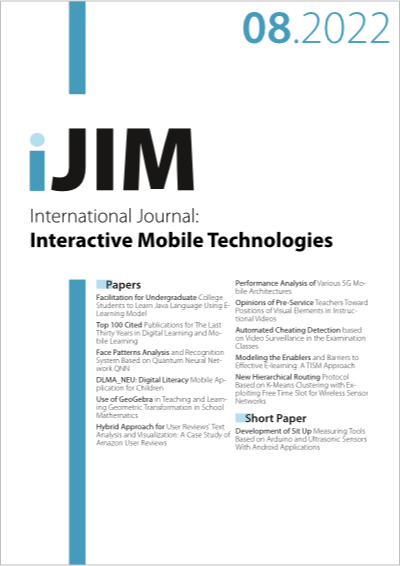Use of GeoGebra in Teaching and Learning Geometric Transformation in School Mathematics
DOI:
https://doi.org/10.3991/ijim.v16i08.29575Keywords:
GeoGebra, transformation, mathematical experiment, episodes, authority, approach.Abstract
The use of GeoGebra in teaching geometric transformations was investigated in this study. GeoGebra is a math software available in over 100 plus languages, both online and offline. GeoGebra is a useful application to improve and enrich mathematics teaching and learning by allowing students to visualize mathematical concepts, which is extremely useful for mathematical experiments and discoveries at all educational levels, from elementary school to university. The theoretical referents used in this article are cognitive learning theory and Vygotsky's social learning theory. Twenty students (twelve boys and eight girls) in grade IX from a private school in Kathmandu Valley, Nepal, were taught mathematics using a variety of specific instances of transformation highlighted in this study, including reflection, rotation, translation, and dilation. This research used a qualitative research method called a teaching experiment to examine the use of GeoGebra in eleven episodes. Students were aided in visualizing abstract concepts of change by using relevant images, photos, and animations of GeoGebra-created objects. The findings of a classroom experiment are GeoGebra is an easy-to-use application, GeoGebra allows for discovery learning, GeoGebra encourages collaborative learning, and GeoGebra to visualize geometric transformations. Likewise, GeoGebra aids in the teaching and comprehension of abstract transformation concepts. These findings show how students can develop into active knowledge builders when GeoGebra is used in mathematics classes. They also communicate with one another, keep track of the change process, and respect their instructors' authority in such classes. It is an important instructional tool that supports the educational system's transition from a teacher-centered to a learner-centered approach by complementing the traditional lecture method of teaching mathematics.
Downloads
Published
How to Cite
Issue
Section
License
Copyright (c) 2022 Niroj Dahal, Binod Prasad Pant, Indra Mani Shrestha, Netra Kumar Manandhar

This work is licensed under a Creative Commons Attribution 4.0 International License.



